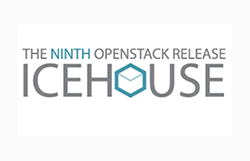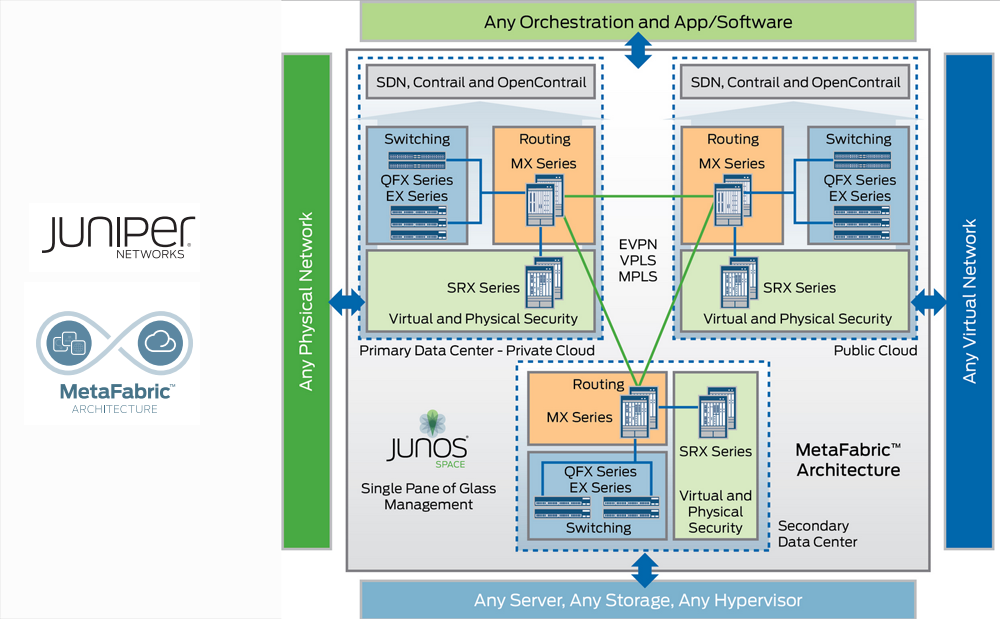 The OpenStack community continues to gain momentum following last month's release of Icehouse - its ninth software stack -- and the opening of an OpenStack Marketplace, said Jonathan Bryce, Executive Director of the OpenStack Foundation, in his keynote address to the OpenStack Summit, which is being held in Atlanta this week. Bryce said the OpenStack movement is many ways representative of the tech industry -- we are moving to an era of agile infrastructure supporting a "software-defined economy."
The OpenStack community continues to gain momentum following last month's release of Icehouse - its ninth software stack -- and the opening of an OpenStack Marketplace, said Jonathan Bryce, Executive Director of the OpenStack Foundation, in his keynote address to the OpenStack Summit, which is being held in Atlanta this week. Bryce said the OpenStack movement is many ways representative of the tech industry -- we are moving to an era of agile infrastructure supporting a "software-defined economy."The new OpenStack Marketplace has five initial categories: Public Clouds, Distributions and Appliances, Training, Consulting and Systems Integrators, and Drive. All included products and services must meet specific technical requirements and be transparent with product information, such as OpenStack versions and capabilities supported.
As in previous OpenStack releases, Icehouse provides a framework for managing pools of resources in a data center. The new code adds support for rolling upgrades along with about 350 new features, including:
- OpenStack Compute (Nova): New support for rolling upgrades minimizes the impact to running workloads during the upgrade process. Testing requirements for third-party drivers have become more stringent, and scheduler performance is improved. Other enhancements include improved boot process reliability across platform services, new features exposed to end users via API updates (e.g., target machines by affinity) and more efficient access to the data layer to improve performance, especially at scale.
- OpenStack Object Storage (Swift): A major new feature is discoverability, which dramatically improves workflows and saves time by allowing users to ask any Object Storage cloud what capabilities are available via API call. A new replication process significantly improves performance, with the introduction of s-sync to more efficiently transport data.
- OpenStack Block Storage (Cinder): Enhancements have been added for backend migration with tiered storage environments, allowing for performance management in heterogeneous environments. Mandatory testing for external drivers now ensures a consistent user experience across storage platforms, and fully distributed services improve scalability.
- OpenStack Networking (Neutron): Tighter integration with OpenStack Compute improves performance of provisioning actions as well as consistency with bulk instance creation. Better functional testing for actions that require coordination between multiple services and third-party driver testing ensure consistency and reliability across network implementations.
- OpenStack Identity Service (Keystone): First iteration of federated authentication is now supported allowing users to access private and public OpenStack clouds with the same credentials.
- OpenStack Orchestration (Heat): Automated scaling of additional resources across the platform, including compute, storage and networking is now available. A new configuration API brings more lifecycle management for applications, and new capabilities are available to end-users that were previously limited to cloud administrators. Collaboration with OASIS resulted in the TOSCA Simple Profile in YAML v1.0, demonstrating how the feedback and expertise of hands-on OpenStack developers can dramatically improve the applicability of standards.
- OpenStack Telemetry (Ceilometer): Improved access to metering data used for automated actions or billing / chargeback purposes.
- OpenStack Dashboard (Horizon): Design is updated with new navigation and user experience improvements (e.g., in-line editing). The Dashboard is now available in 16 languages, including German, Serbian and Hindi added during this release cycle.
- OpenStack Database Service (Trove): A new capability included in the integrated release allows users to manage relational database services in an OpenStack environment.
A10 Networks -- demonstrating on-demand provisioning of L4-L7 services in an OpenStack cloud environment. This showcases how A10’s aCloud Services Architecture, integrated with OpenStack, allows customers to dynamically scale up and down L4-L7 services in public or private clouds.
Brocade and Huawei -- proposed a new OpenStack service to support inter-data center multitenancy. The idea is to provide an automated solution for companies with multiple data centers to address the challenge of maintaining connectivity and policy context for virtual machines migrating between data centers. This proposal The proposal has the potential to simplify the manageability and overall efficiency of inter-data center multitenancy.
Brocade's earlier contributions include Fibre Channel (FC) Zone Manager, which was released as part of the OpenStack Icehouse release supporting key FC SAN functionality. Cinder, the OpenStack Block Storage service, creates a layer of abstraction that supports connectivity of multiple iSCSI and FC storage devices. The FC Zone Manager extends Cinder's FC support to provide automated SAN zoning. In today's OpenStack environments, FC SANs are either pre-zoned or open-zoned. Pre-zoning introduces complexity in cloud orchestration and involves considerable manual effort that may be error-prone. The Automated Zone Management overcomes challenges and limitations related to complexity and human error resulting from FC SAN zoning.
Ericsson -- announced plans to deploy OpenStack as a framework for its Network Function Virtualization (NFV) development. During the OpenStack Summit, Ericsson will demonstrate the Ericsson Virtual Enterprise and Residential Gateways, which are examples of integration of OpenStack into its Service Provider SDN solution. Ericsson will also demonstrate a charging system for OpenStack, based on the Ericsson online charging system.
F5 - will support OpenStack open source cloud software across four key areas: (1) Application Delivery – OpenStack Networking (Neutron) Load Balancing as a Service (LBaaS) and other capabilities can be integrated with F5’s BIG-IP and BIG-IQ solutions via plug-ins, (2) Orchestration – OpenStack Orchestration (Heat) integration provides enhanced functionality with BIG-IQ cloud connector capabilities for OpenStack Community Edition software, (3) Vendor Certification – F5 is in the process of validating its integrations with other companies in the community to ensure fully supported, vendor-tested OpenStack deployments, (4) Community Innovation – F5’s DevCentral user community is expanding to better support OpenStack developers with plug-in downloads, sample code, and documentation to help organizations maximize their technology investments.
PLUMgrid -- announced its secure virtual networking product for large-scale OpenStack clouds. Built using PLUMgrid Platform and IO Visor technology, it provides a solution to build cloud infrastructure at scale and offer secure, multi-tenant network services to OpenStack cloud users. Based on a highly automated workflow, the PLUMgrid OpenStack Networking Suite enables applications and users to deploy private Virtual Domains in seconds without changing the physical network fabric.
Pluribus -- showing OpenStack orchestration based on the Red Hat Enterprise Linux OpenStack Platform, featuring tighter integration with native network services, as well as additional capabilities that include the ability to set per-tenant and per-application QoS, and the use of the Netvisor’s ‘vflow’ capability for application flow programming. The integrated server hardware and storage on the Pluribus Freedom platform can host the OpenStack controller in addition to other network services, eliminating the need for separate orchestration hardware within the rack.
Red Hat -- announced the formation of the ManageIQ community, which aims to provide the industry's leading open source cloud management platform with advanced governance and automation capabilities. Red Hat will contribute software acquired from ManageIQ, Inc., which currently serves as the basis for its Red Hat CloudForms open hybrid cloud management product. In addition to its software contributions, Red Hat will also provide integration and orchestration content for lab automation. This platform and content pairing help ease the building of development and testing clouds based on OpenStack.
Red Hat and NetApp -- will eliver an open hybrid cloud reference architecture based on OpenStack IceHouse to help organizations build agile, interoperable private and hybrid clouds that are easily managed, massively scalable, and highly reliable. This reference architecture will be designed to enable customers to more closely integrate Red Hat Enterprise Linux OpenStack Platform.

















